(2021 – ongoing)
In late 2020 I was made a proposition, due to my interest in playing with pictorial space, to make a work based on Paolo Uccello’s Battle of San Romano, the celebrated Quattrocento masterpieces of the early renaissance. This triptych, which was split up and are now in London, Florence and Paris, are some of the earliest examples of Western mathematical perspective, and are quite amazing for their graphic composition and dynamic energy. I accepted the challenge, and started to consider how to go about the project.
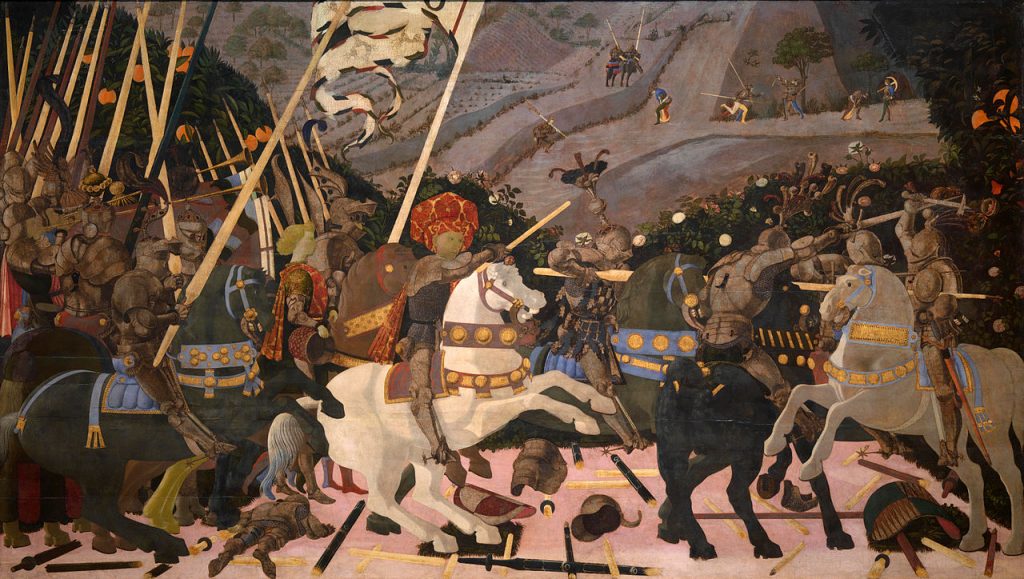
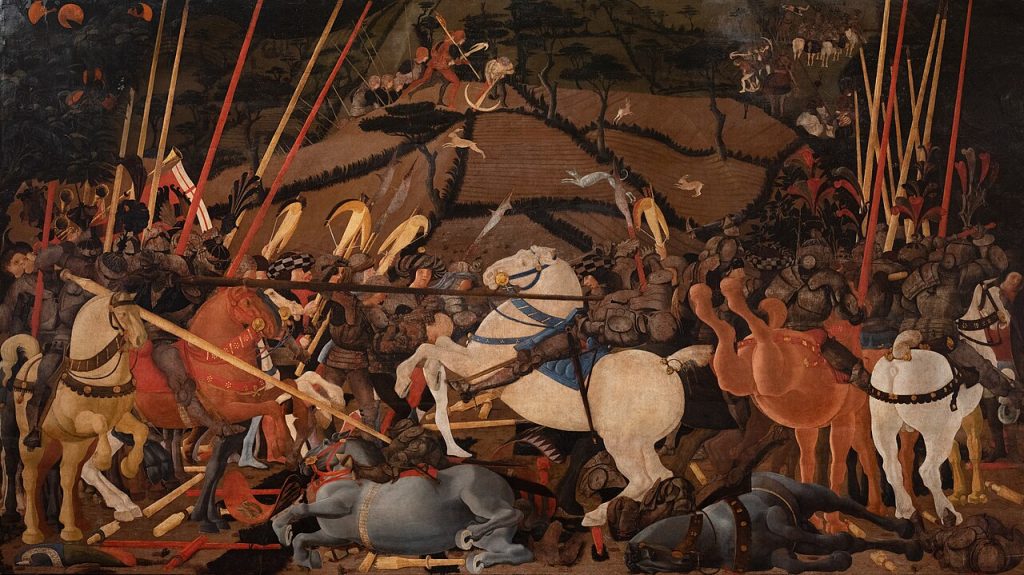
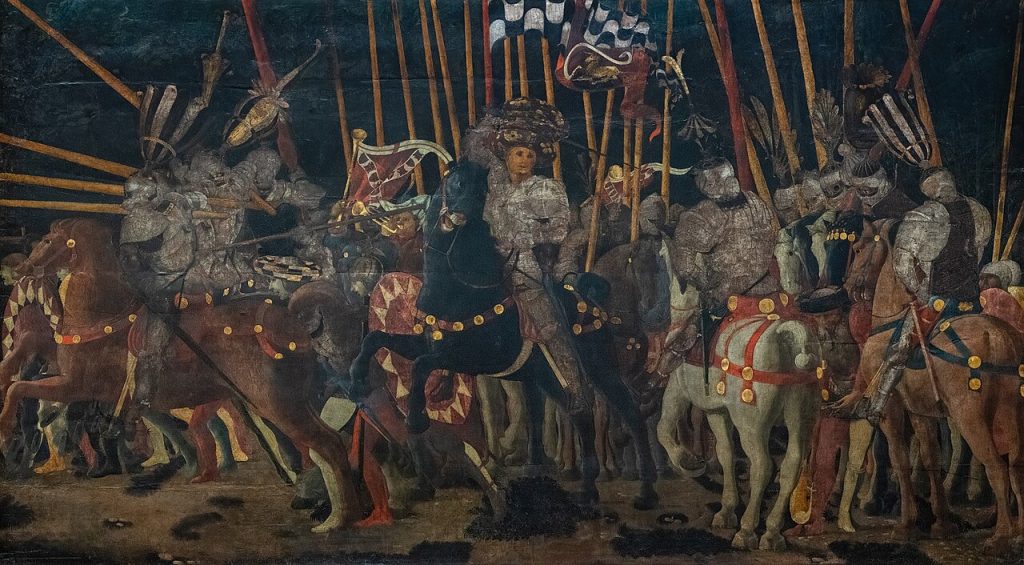
I knew of the works, but not well. I was most familiar with the version in the National Gallery in London, in particular for the foreshortened soldier face down on the ground, and the strange pink floor. So I started with that. I like to envisage objects from different perspectives in my work, and thought about how this guy would look if we saw him from the front. This reminded me of David Hockney’s painting ‘Play within a play’ where Kasmin is squashed up against the front of the image, and I liked this sense of the weight of the image being pressed towards the viewer. Realising that my usual approach to making a composition by unfolding and flattening a space would add nothing to these scenes (which already are rich in multi-perspective and compressed depth), I decided to rotate the entire scene along with the prostrate soldier, to calculate and depict the battle from below, looking up. The broken lances would form a sort of Mondrian-esque grid across the surface, with the various pieces of armour, patches of grass, soldiers feet and horses hooves being at the absolute foreground of the image. Each of the three scenes offered an exciting variation of composition and colour, such as the aforementioned pink floor of the London painting, the horses on their side which would thus be seen in profile in the warm ocre Florence painting, and the darkness of the Paris painting, where there is nothing on the floor other than a few patches of grass and a mass of feet, making me think of dance choreography or football tactic diagrams.
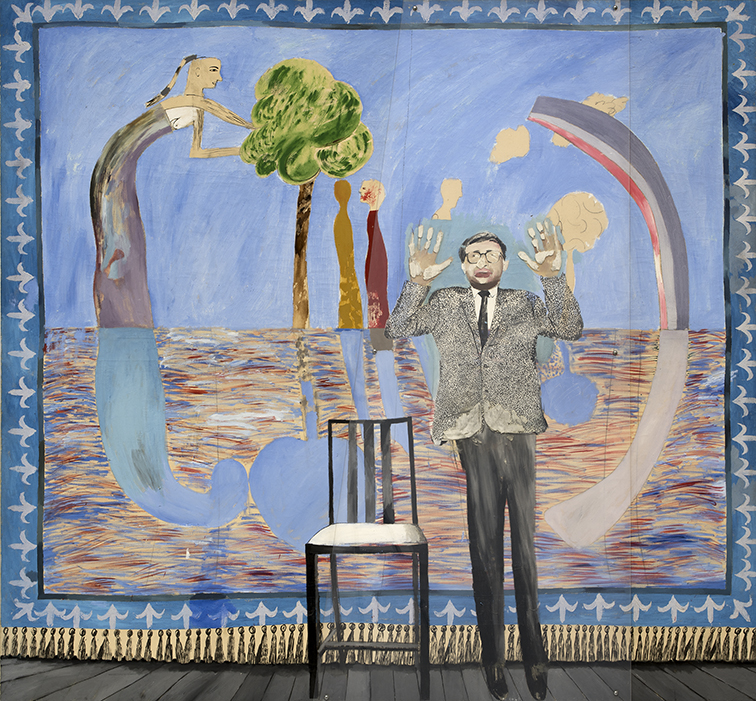
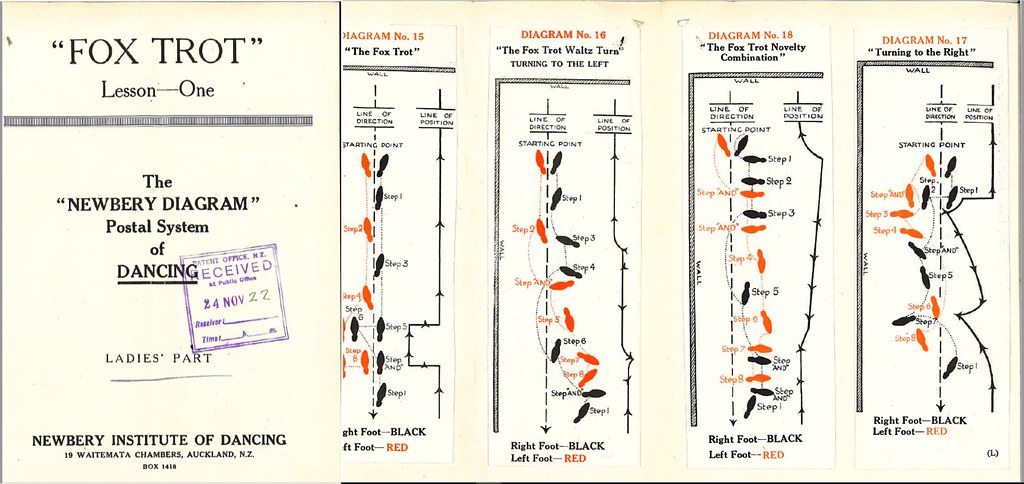
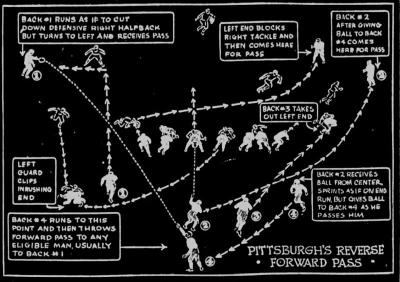
Excited by this idea, I got down to drawing, plunging into deep research of the works, through books, vintage DVDs, museum renovation documentaries and close observation of the original paintings. I considered visiting a stable or hippodrome to see if it was possible to make studies of horses from below, and looked for places that had glass floors to understand better how human figures can best be depicted from this unusual angle. I also thought about visiting military history museums to see examples of the armour and weapons in detail. However, I realised that I needn’t look further than the original paintings themselves, as there is such a variety of angles and positions used by Uccello in the three scenes that any questions I had about how a certain half hidden figure or object might look in it’s entirety, or from another angle, was answered elsewhere in the composition.
So, the first step was to map out the ‘floor’ of the works, by figuring out a probable vanishing point (there are indeed several possibilities!) and tracing a perspective grid, which I could then correspond to a rectangular grid, to understand position of the feet and objects in the space, and to get a rough sense of the overall composition. Then I made ‘x-ray’ drawings determining the number of figures in the scene, which feet might correspond to which glimpse of a head etc., and what poses and actions each individual could be in. Once decided and sketched out, I rotated these figures in my mind and envisaged how they would look from below, making a drawing of each. These I then traced and cut out, using them to match up best I could with the grid map, trying to fit all the figures in while keeping faithful as possible to their position in the original painting (not so easy, as the space in Uccello’s battle is illusory and there is not quite enough depth to incorporate so many people and horses!)
Once I had established a final drawing of each of the three compositions, I painted a loose colour version to understand the overall tonal balance. By this time (a year later!), I had started to determine ideas for how to develop these drawings into larger works. I had started to experiment with incorporating this new ‘worms eye view’ in my other projects (see my ‘Crocodile Enclosure‘ or ‘Act I‘ paintings from 2021), and was excited about making a triptych of paintings at the same size of the originals… However, I was also intrigued by the possibility to try a ‘paper marquetry’ version (see collage page) – as this technique I enjoy is a type of mosaic, which resonated with the concept of the work being based on the ‘floor’ of the battleground. Wanting to make it large enough to not be too fiddly with all the details, and worried that a paper version would be fragile and annoying to make at this scale, so I considered using plywood, which I could cut out and paint and reassemble. During the course of all this research, I had begun to have more opportunities for exhibitions of my work, and needed to have a variety of finished pieces for impending shows, so I had to put the Uccello project to one side for a while… but not completely! Alongside my other paintings, I made a series of ‘painted wood mosaic’ pieces (see painting page : cutout paintings 2022), to explore the possibilities of this new technique, in anticipation for its use with the battle scene compositions. When I could get back to the project in the spring of 2023, I made large, detailed drawings at the scale I wanted for the mosaic version, traced them onto panels of plywood and got cutting.
Over the time I was working on this, I began to consider the possibility of using these cut out pieces to print from, before painting them and reassembling them. Especially with all the feet and horses hooves I was cutting out, I liked the idea of making ‘foot prints’ with them, and a version of the battle which is made out of the pressing down of all these figures onto the surface of the work. Great !
Like the Lernaean Hydra, the more I cut, new ideas sprang forth, and now my triptych was becoming a triptych of triptychs, a nine headed monster ! Three versions : painting, mosaic, and print, of all three scenes… By the end of 2023 I had managed to get my wooden cut-out up to a stage where I could make a printed version, but, as before, I had other projects and exhibitions that demanded my time, and I decided to use these to test the printing of some mosaic pieces in a series of smaller works. So, last year, I did that, with a variety of ‘printed paintings’, including Spanish hot springs, a minigolf, a Lipstick Photoshoot, and a whole series of musicians in a variety of Scene Ouverte combinations (see printmaking page).
And now its well into 2025, and I have been looking forward to getting back to the Uccello project, at last, but lo and behold my ‘musicians’ project has landed me a residency at the Casa de Velasquez in Madrid, for a year…! I’m not complaining, its an amazing opportunity, and I’m excited to go to Spain and try some completely new ideas, but this battle of mine is back on hold. But that’s OK. I’ve come to accept it as a long term project, and appreciate how much it has influenced my wider practice and experiments with techniques along the way. However, I thought for now I’d at least share the project as it is, the ideas, intentions and a selection of images of the works as it has progressed. Do click on the images below to see them bigger, and there are a few extra explanations and comments if you click on the ‘info’ button below the image :
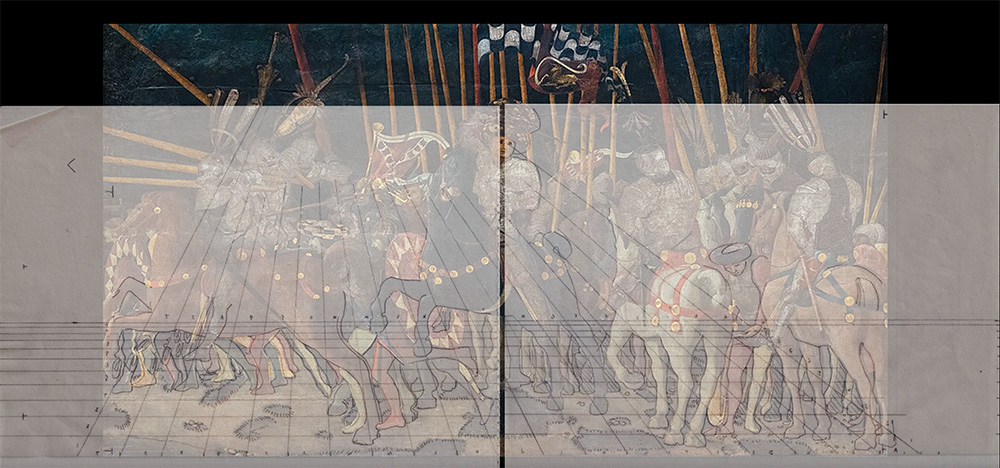


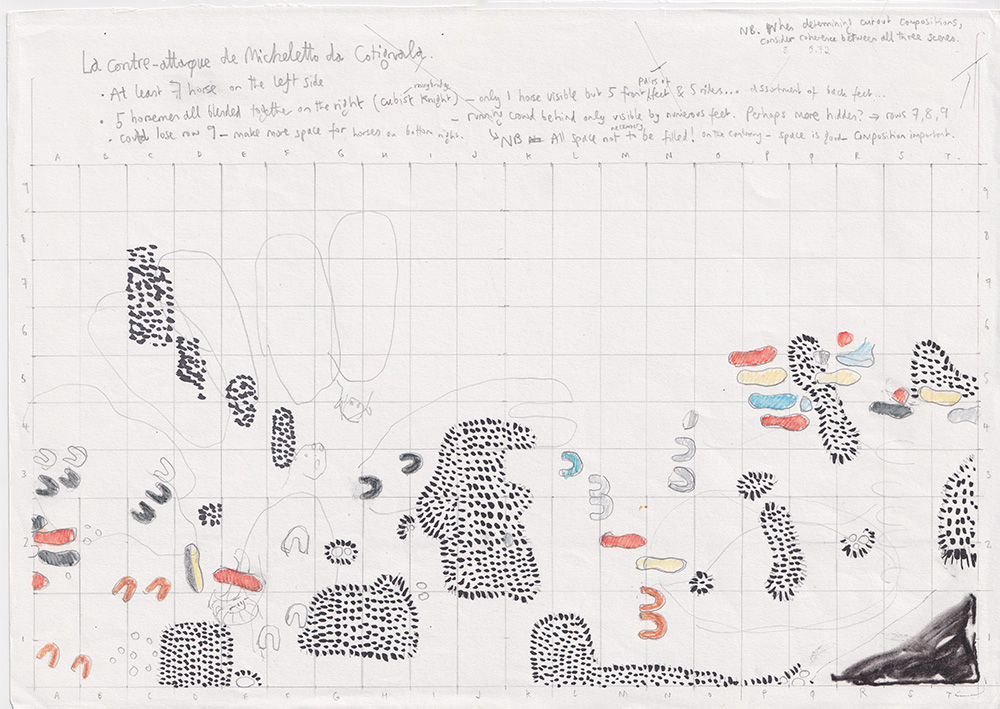

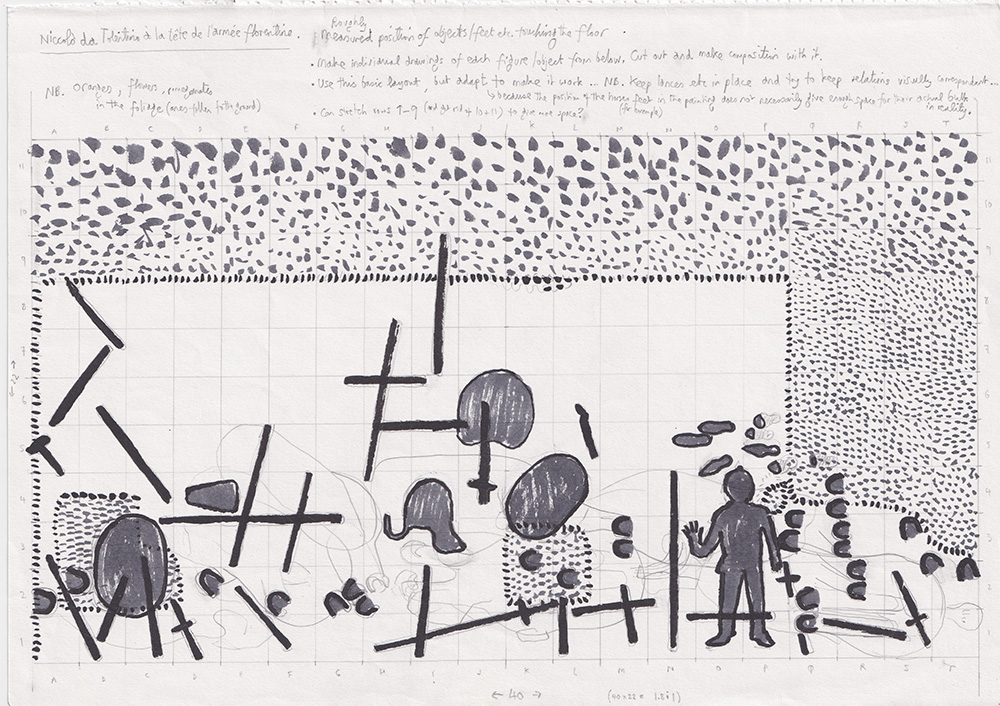
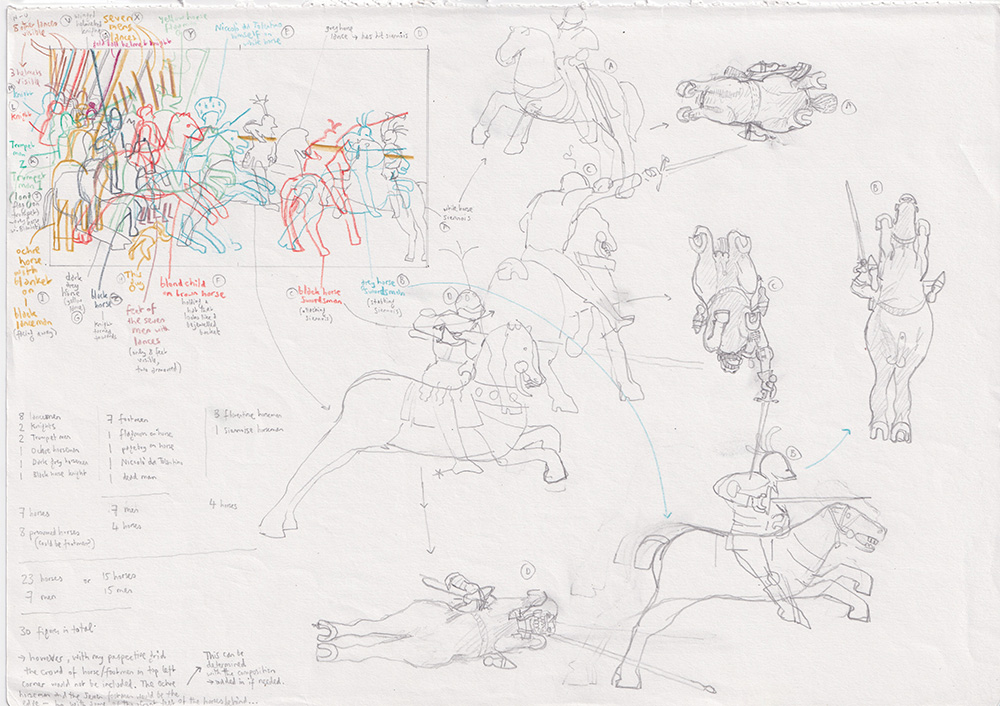

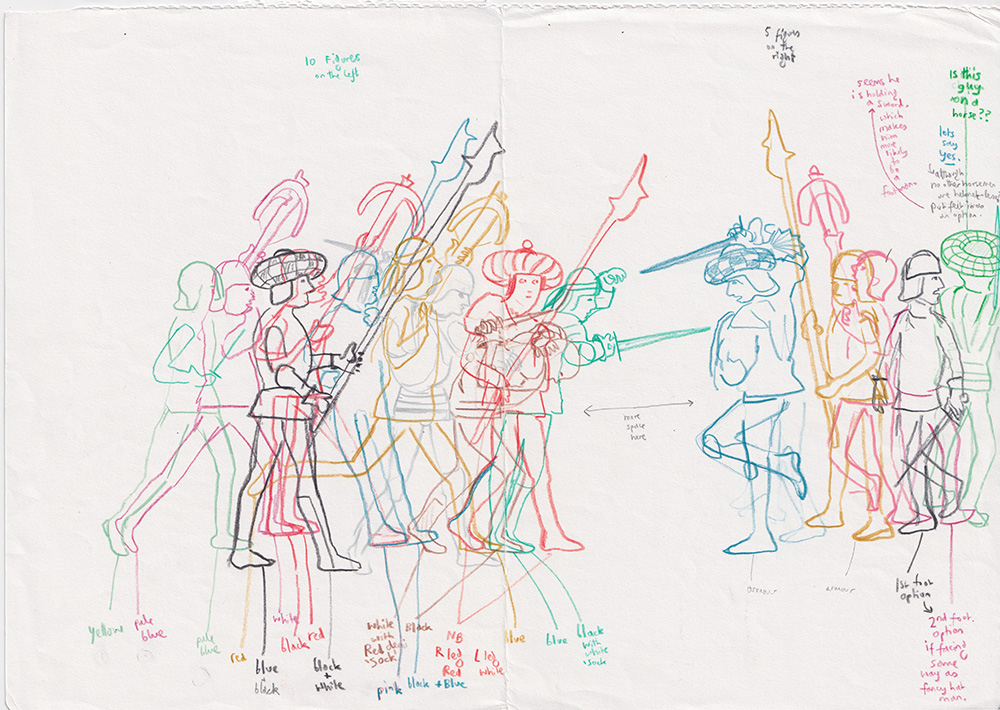
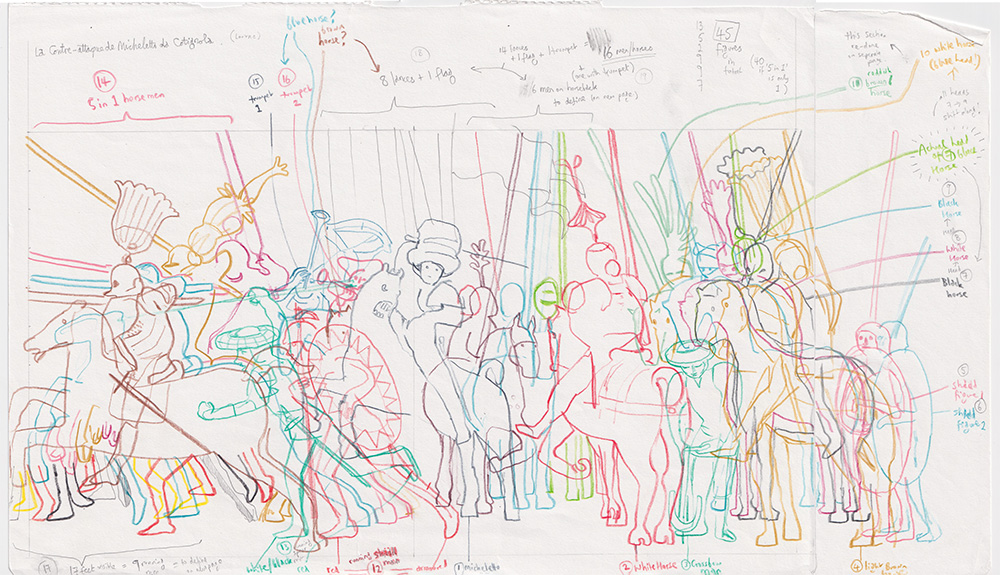
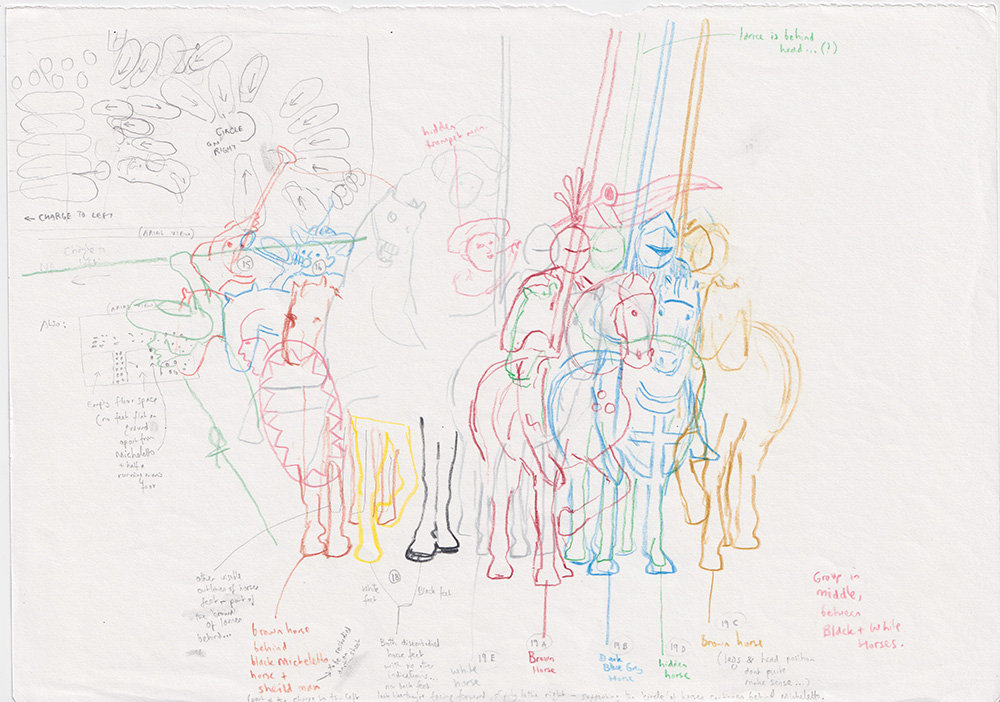
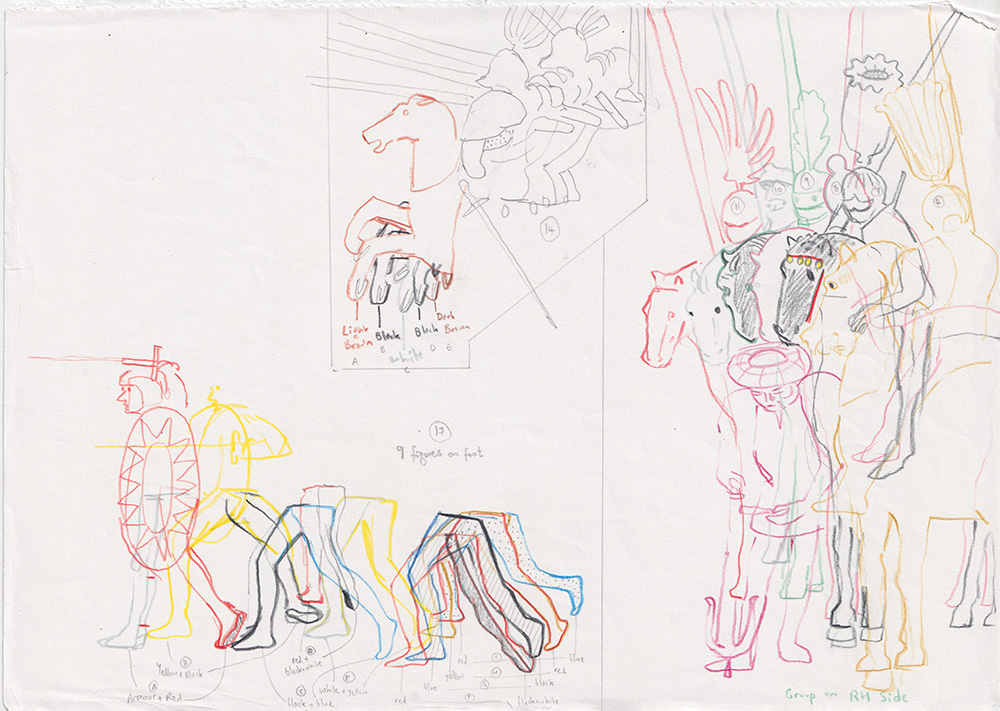

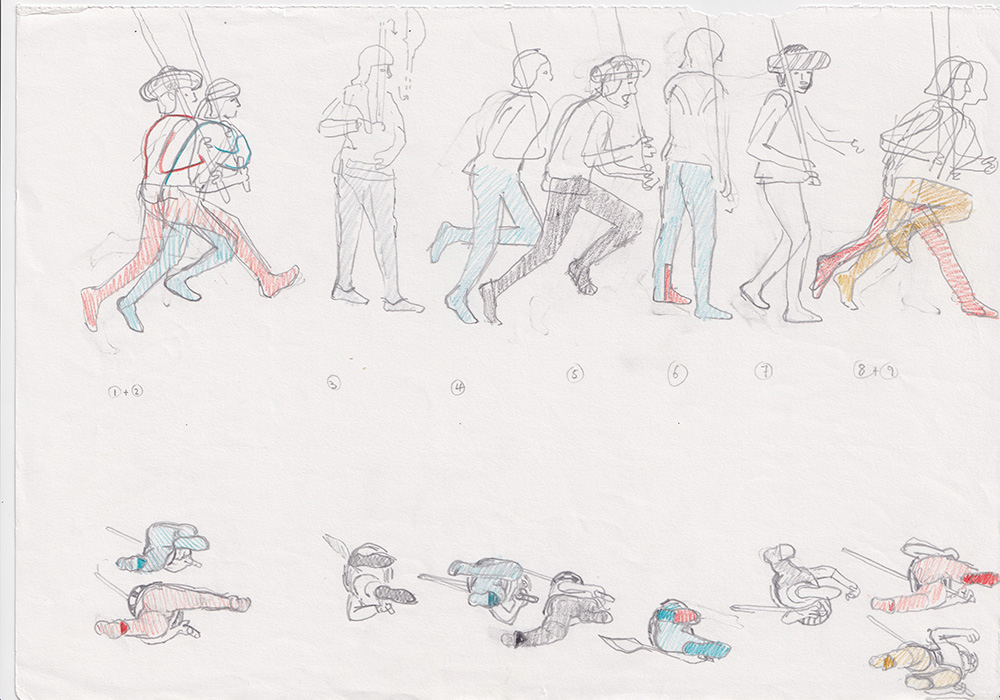
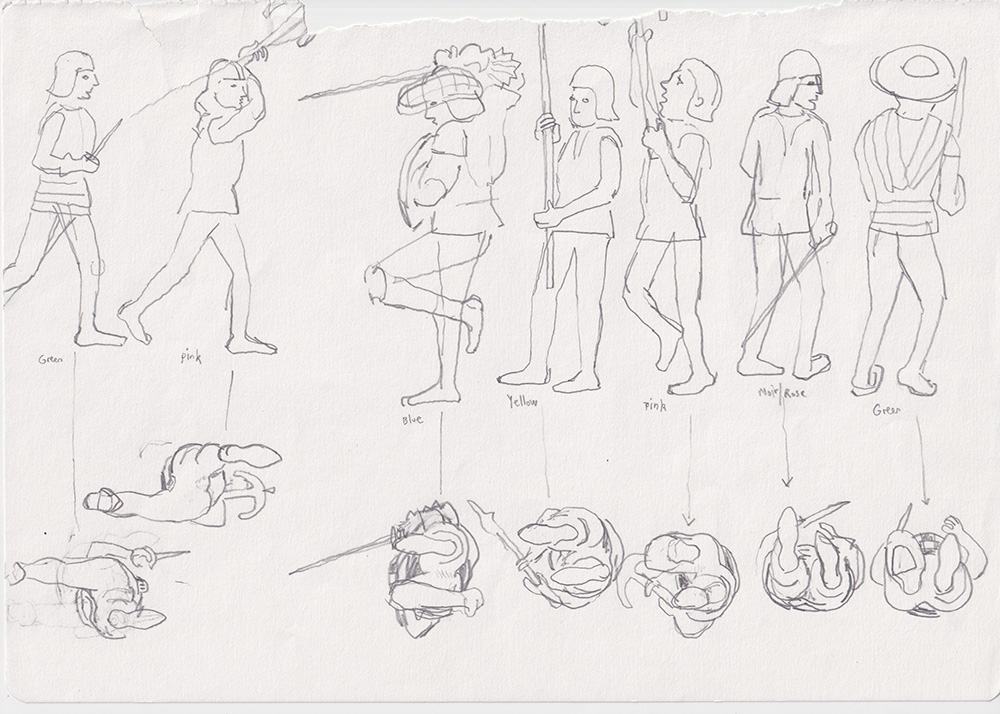

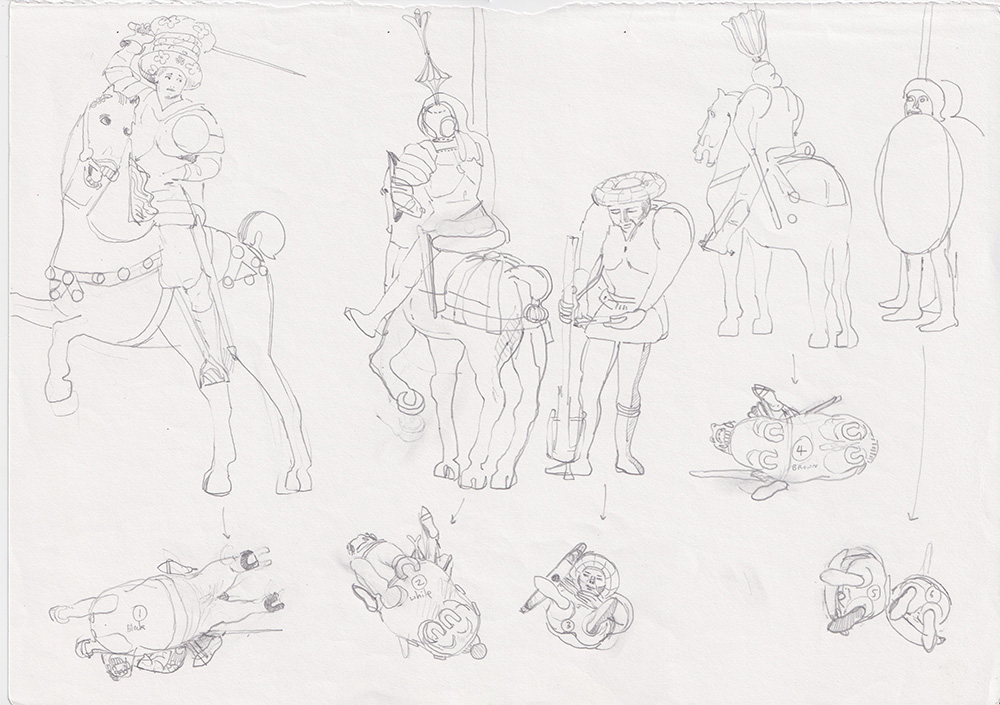
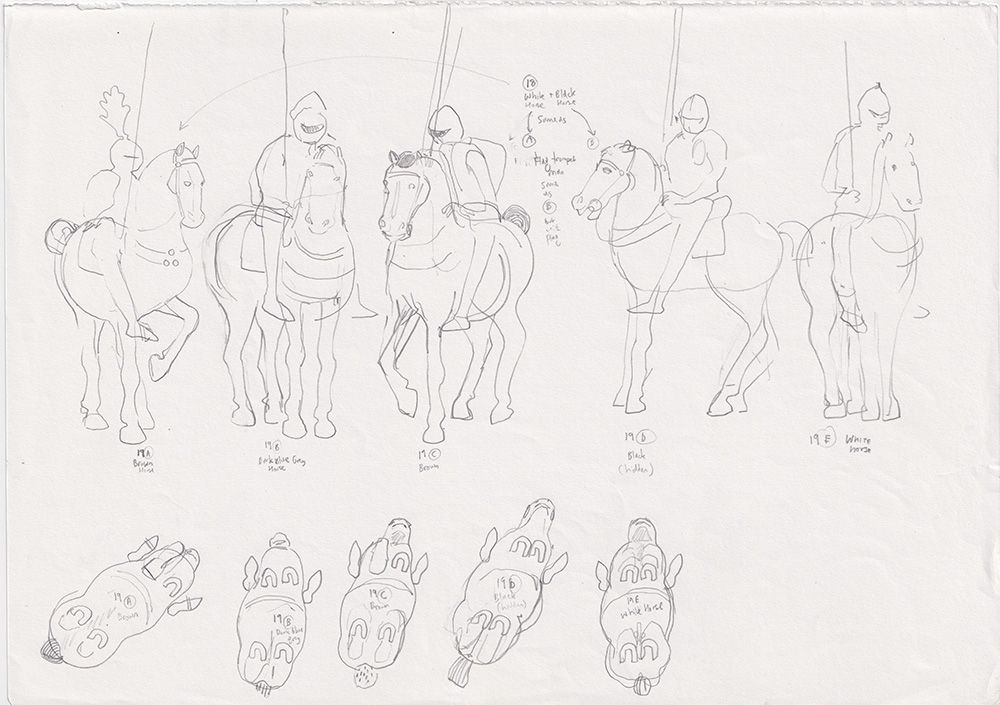

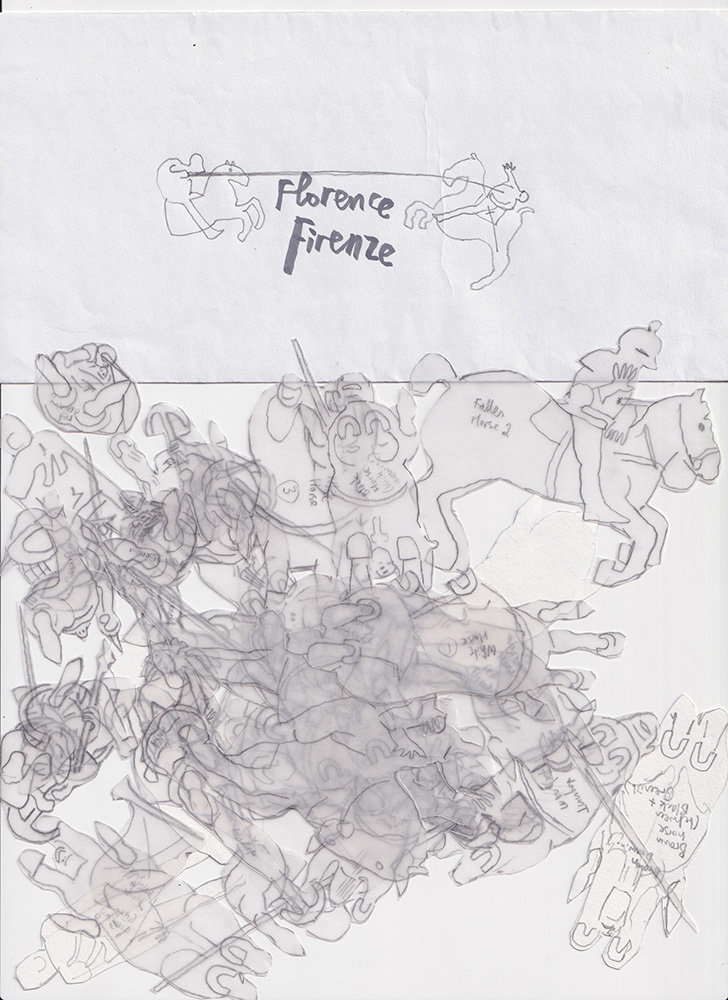

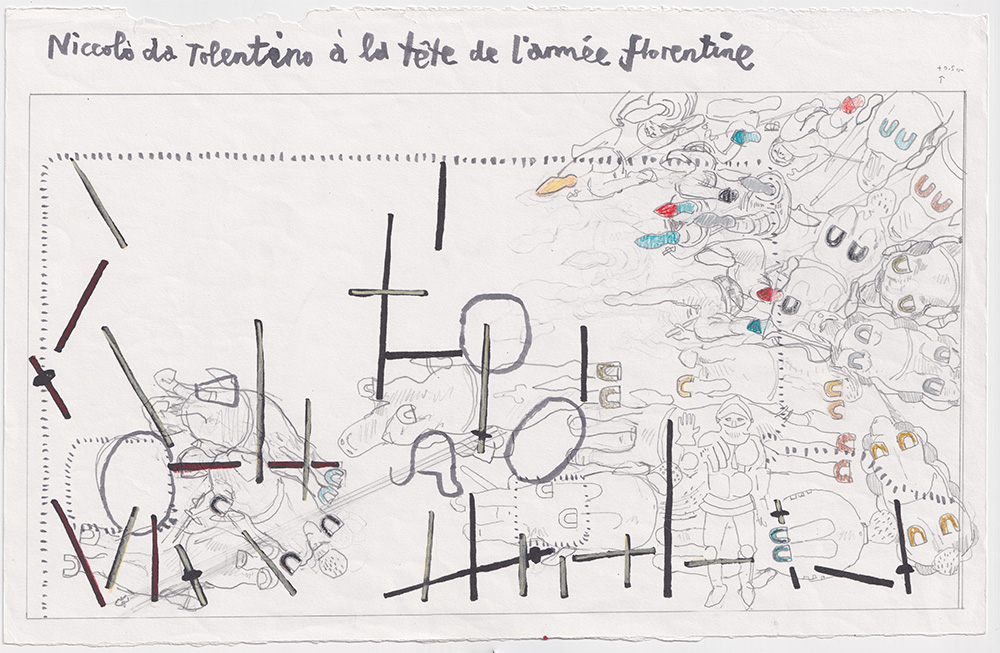


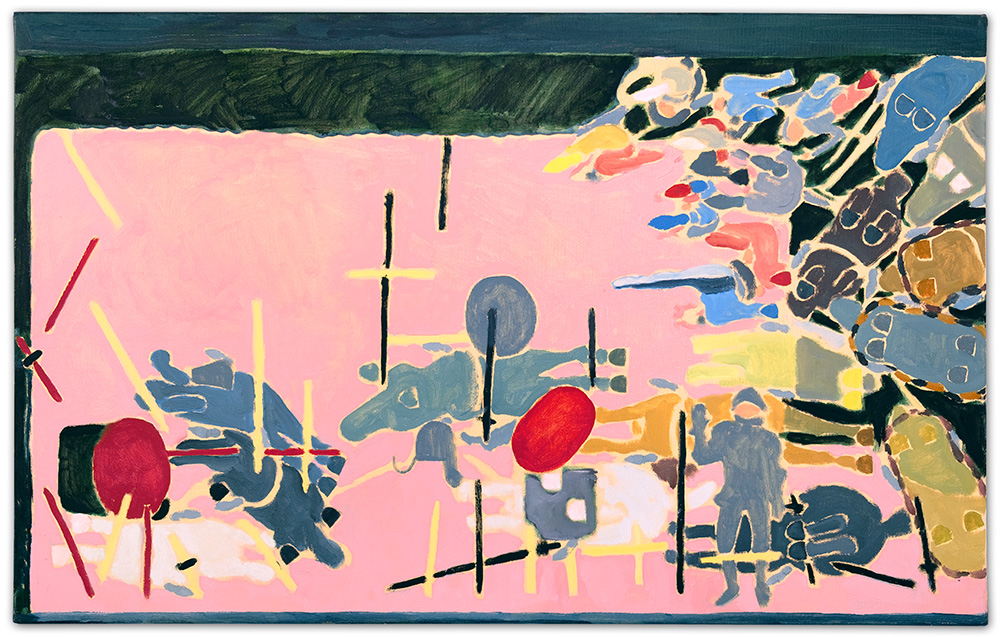
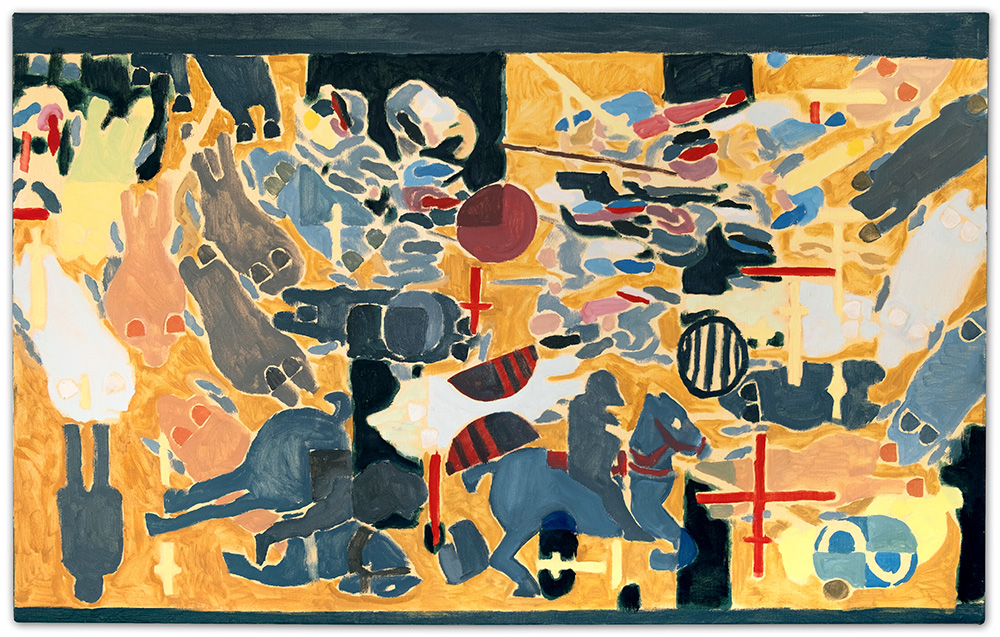
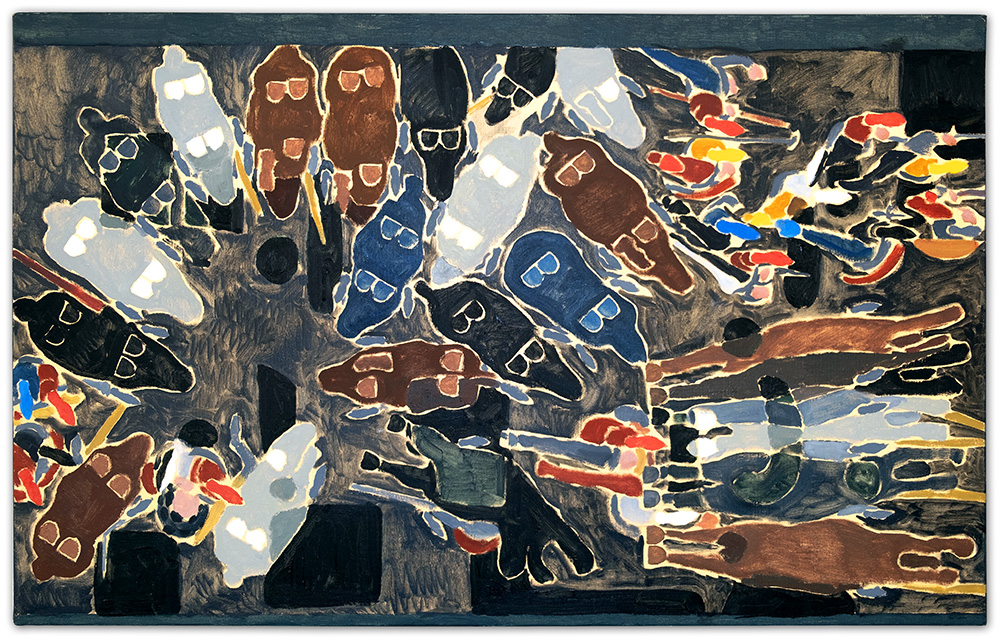
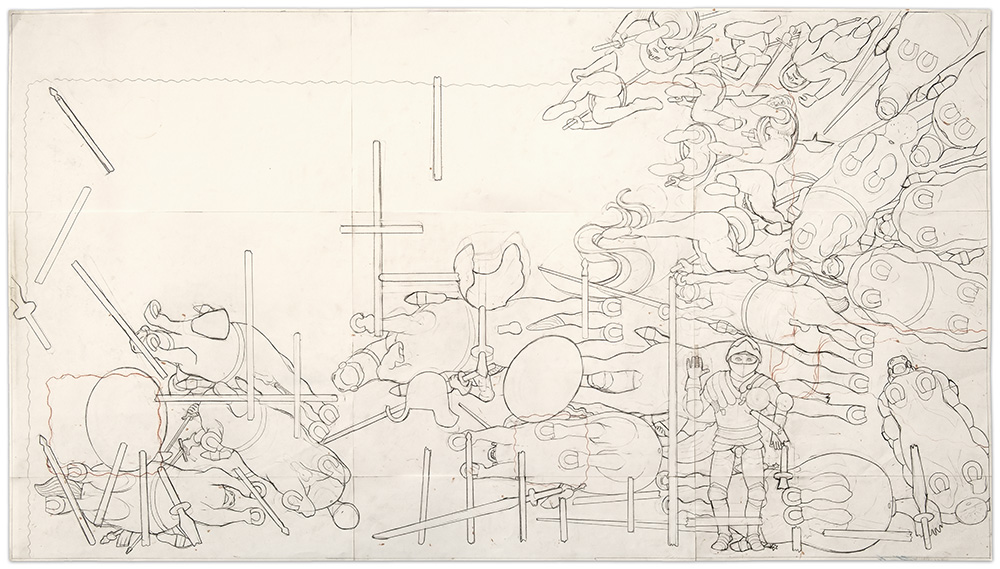
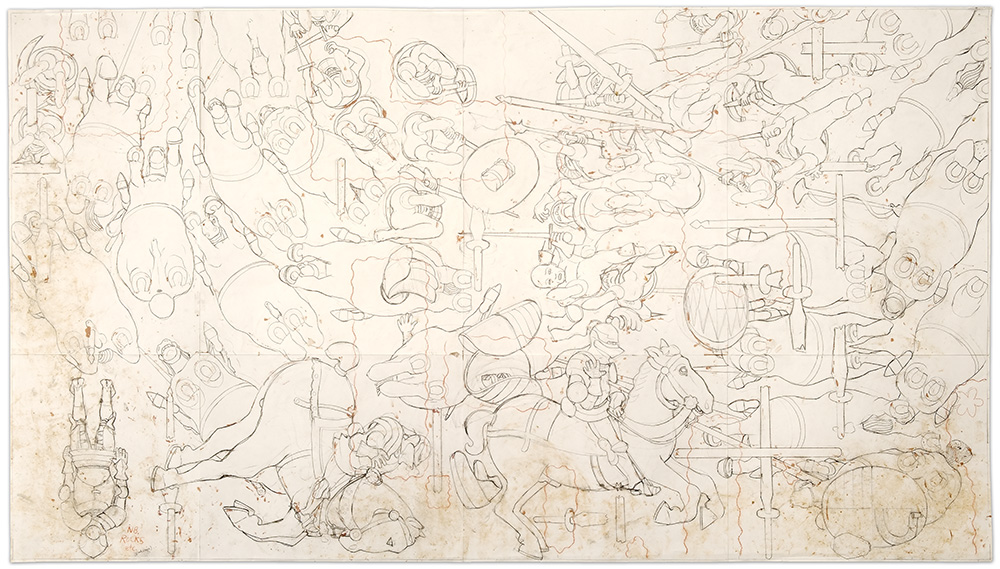
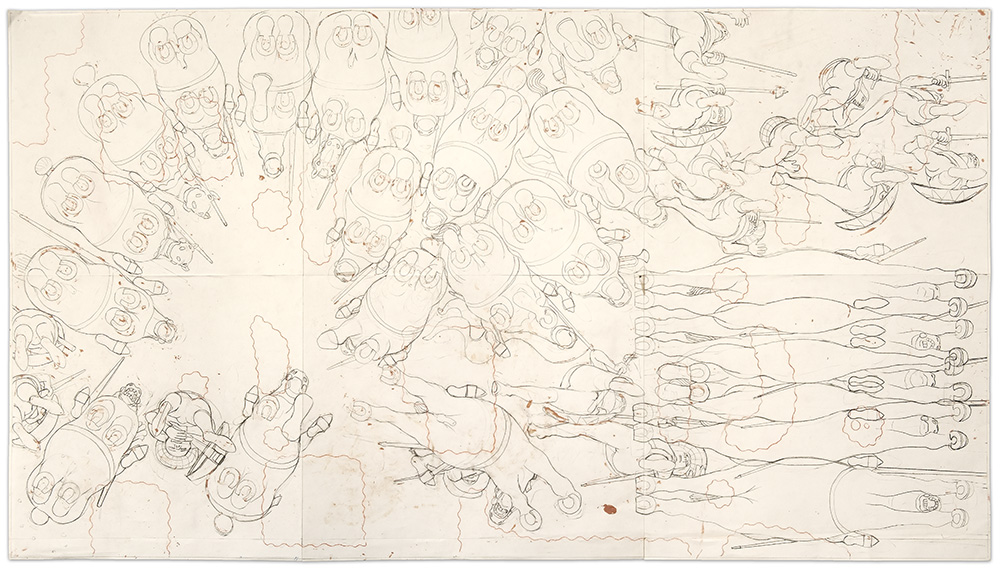

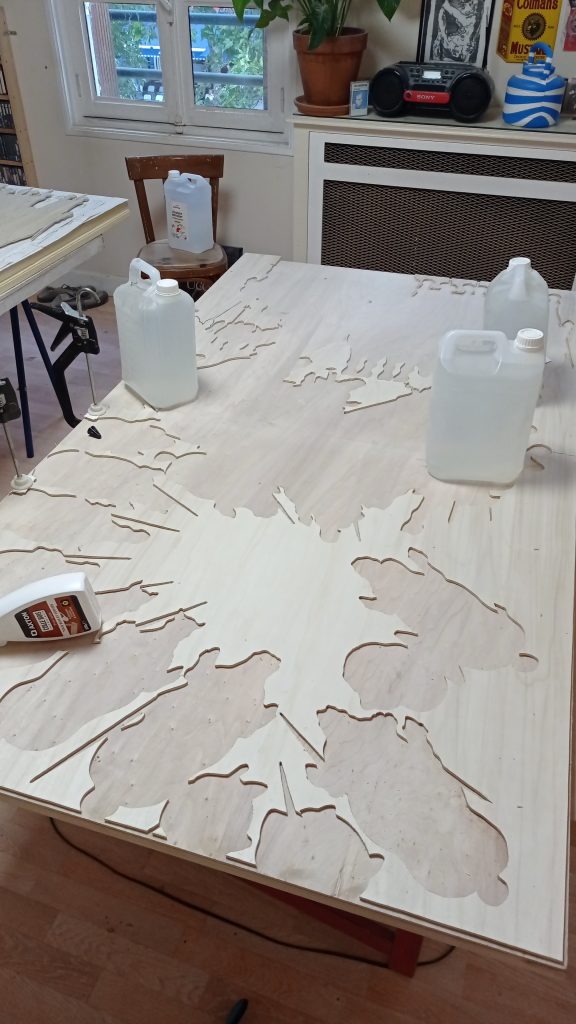
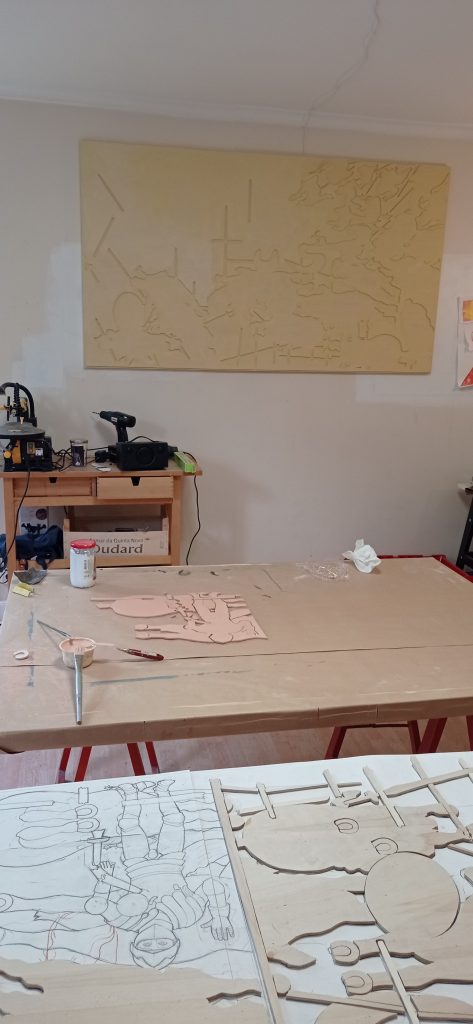
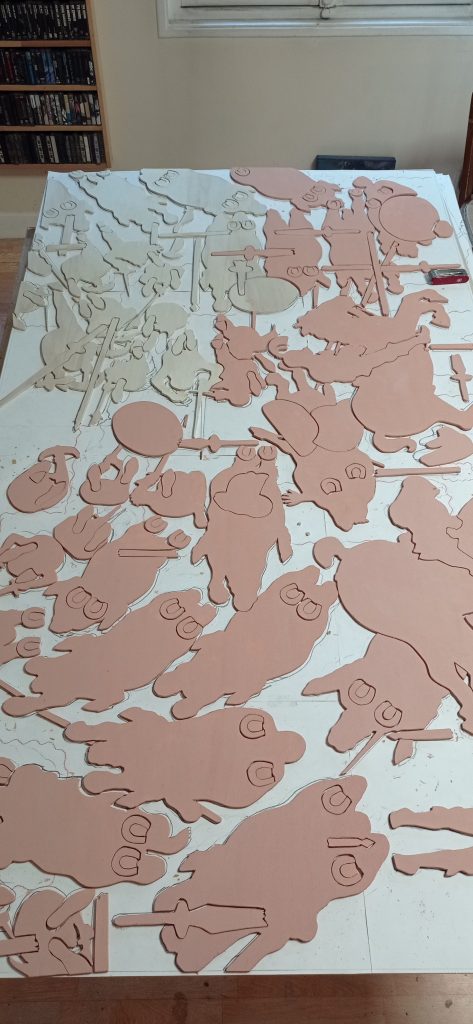
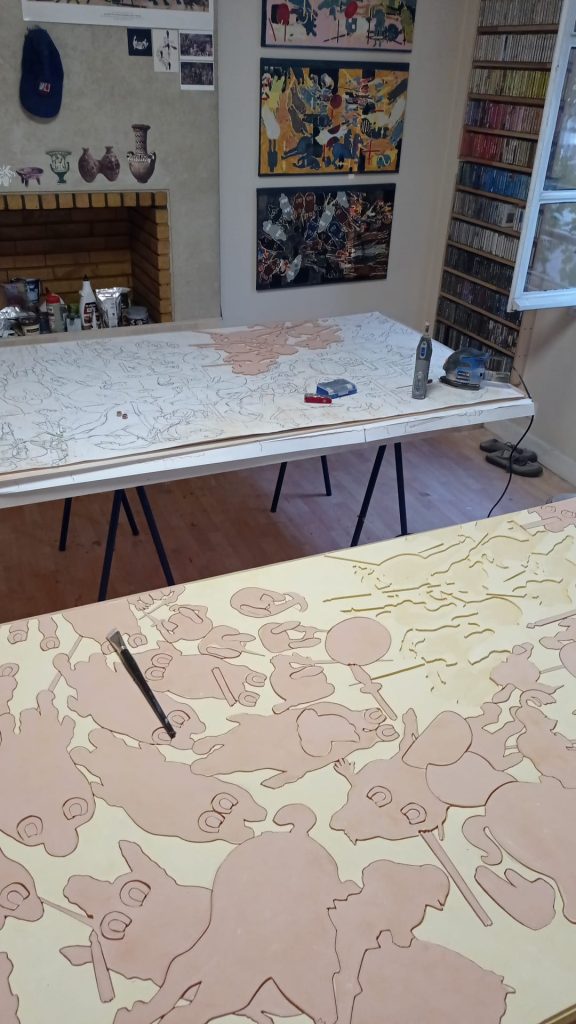
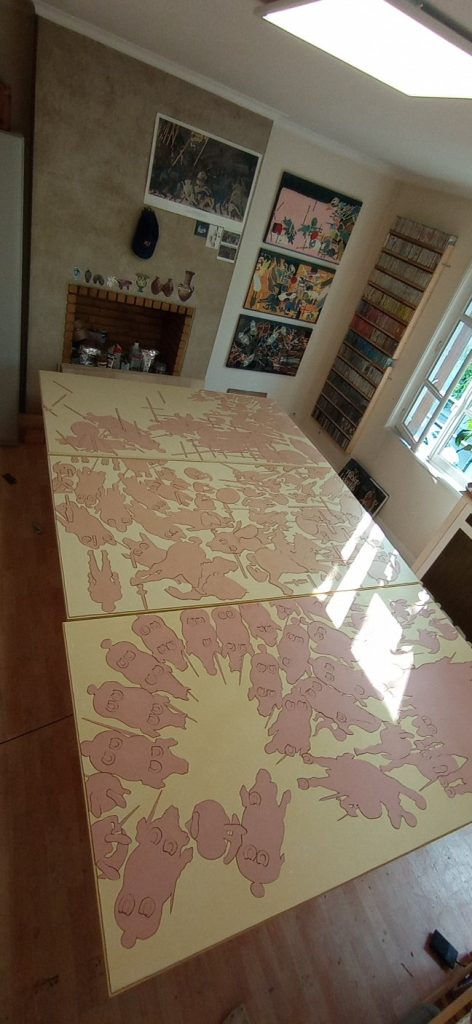
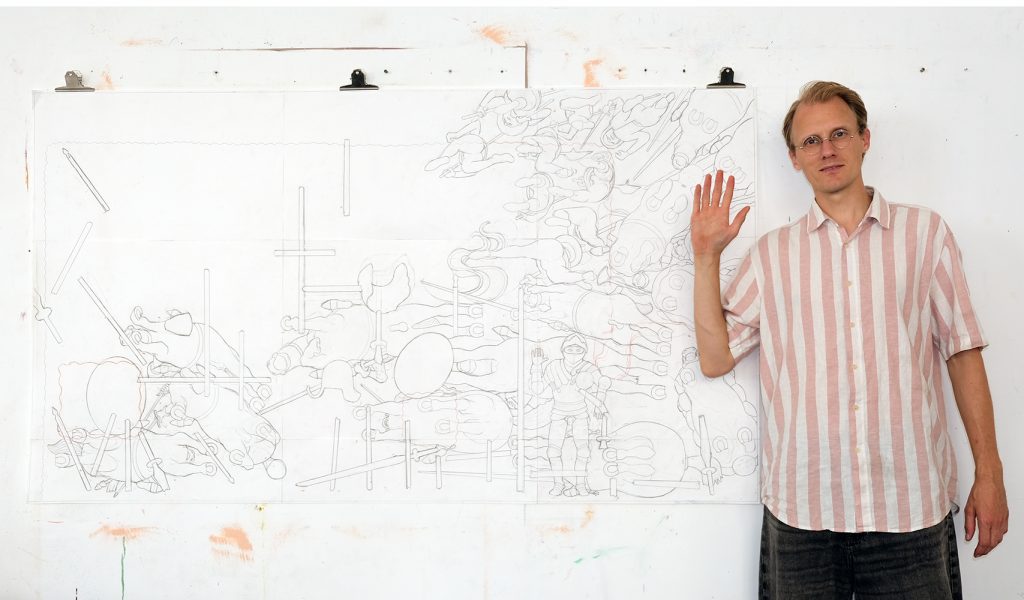
You must be logged in to post a comment.